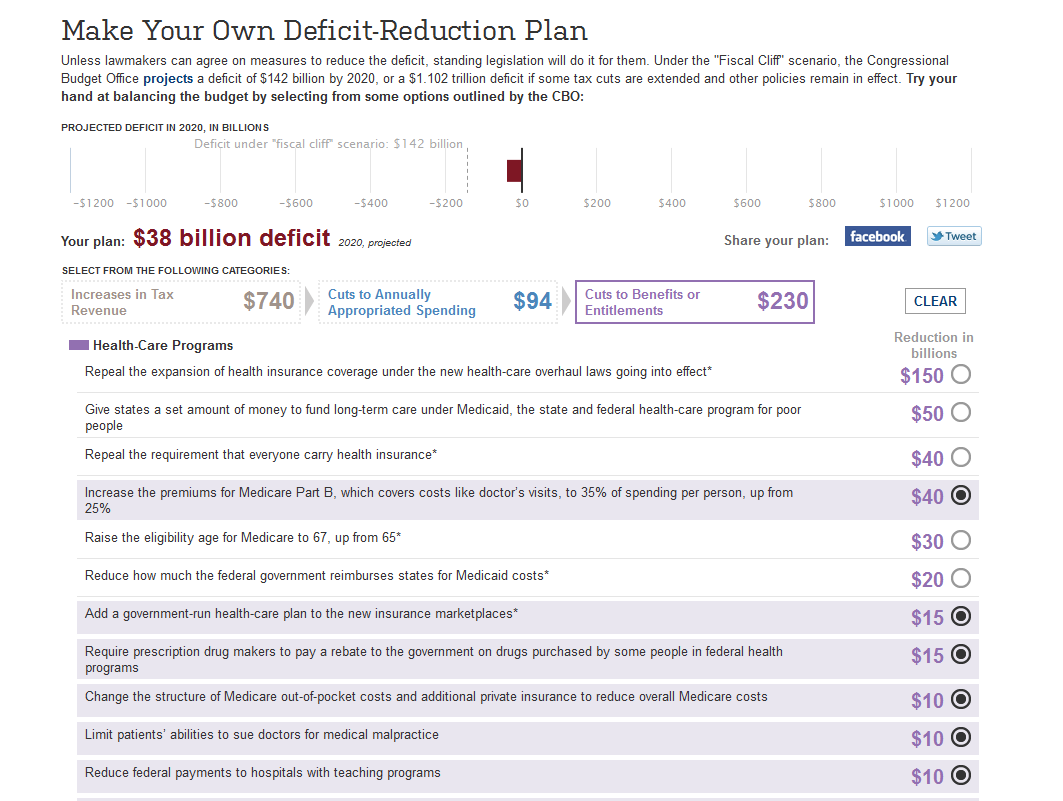Make Your Own Deficit Reduction Plan!
All eyes are on Washington, as we see what the White House and the Congress agree on to avert the fiscal cliff and begin to tackle our debt. While we wait for our national leaders, we can at least have some fun coming up with our own plans.
Just like CRFB's budget simulator exercise, The Wall Street Journal has a new game that enables users to come to terms with the difficult choices our national leaders are faced with in reaching a deal. Unlike CRFB's simulator, which shows users what they would get debt as a percent of GDP to in 2020, the WSJ simulator shows how much users reduce the projected $1.1 trillion deficit in 2020.

The game features a variety of options scored by CBO covering revenues, discretionary spending, and entitlement reform. Some options include:
- Let the 2001/2003/2010 tax cuts expire as scheduled
- Place a 15 percent cap on the value of deductions
- Increase the earnings subject to the Social Security payroll tax to $170,000 (currently $110,100)
- Enact a carbon tax
- Allow the sequester to go into effect
- Enact tort reform
- Add a public option to the health insurance exchanges
- Change inflation measure for COLAs to a more accurate measure of inflation (the chained CPI)
- Raise the retirement ages for Social Security
When playing the game -- like the CRFB simulator -- it becomes apparent quickly that it is quite difficult to make a significant dent in deficits using only tax increases or spending cuts alone, especially considering the politics involved with many of these options. Any plan, especially one that is politically realistic, will need a mix of revenue and spending cuts that looks at all areas of the budget.

